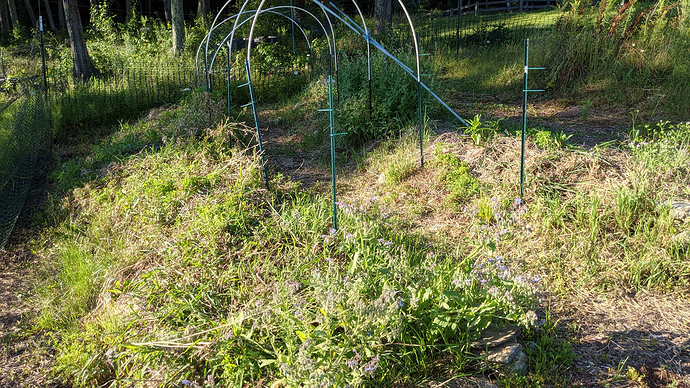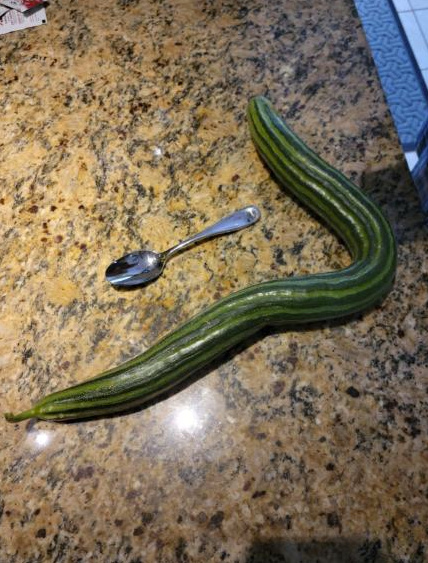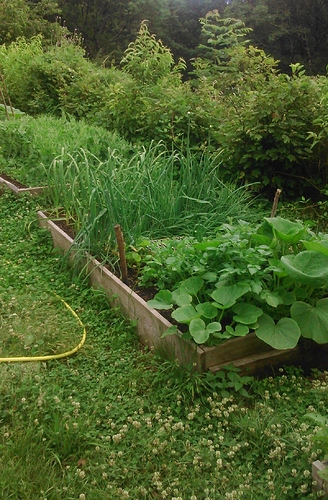I’ll make a new topic on this soon

(10chars)
Leveling! That’s what gonna hook up a lot of farmer here!
Don’t forget to include cheat code to use that tractor or whatever 
In light of recent gardening talk, thought I’d share the sins of our gardens as well. My wife and I are what I’d classify as “hardcore-casual” gardeners. We tend to overdo growing goals/garden plans, finish things half-way due to work and life getting in the way and then complain about how terrible the garden is doing. From my experience, it really is a big commitment to do anything right. After a few years of ups and downs, we’re finally starting to find a balance of easy to grow crops that are disease resistant. Weeds are definitely the most persistently annoying aspect of growing vegetables, in my opinion. Occasionally a ground hog or a stray deer can ruin your Christmas, but it’s really the weeds that break your spirit (and your back) in the long-run. Here’s a shot of what happens when you neglect your weeding duties for a year:
I should mention, this is actually looks much better than it is because I took the shot after ravaging everything with the weed-whacker. These beds are going to need a full overhaul next year, which is not going to be fun, but at least the Borage is pretty (the purple flowers in front).
Borage is one of those ‘Trojan horse’ type traps that novice gardeners like my wife and I fall prey to. It’s a companion plant that’s supposed to help other plants do better. Much like cover crops, companion plants help either with nutrients, pest management or both. Plant Borage with Tomatoes they say, it helps repel pests they say. Well, it also completely takes over your garden the following year(s) apparently. We planted a few borage seeds the first year of our garden (3-ish) years ago and we’re constantly ripping out plants even now. Very pretty though, at least!
I don’t have Borage here, so had to look it up and see its native to the Mediterranean. I love how all the worst weeds and pests we have are imported from Europe and Asia - thnx guys…
We are just returning favors…
I won’t veer us too far off by going into particulars beyond saying that Europe will never be able to repay that debt they owe us  But we’ll call in that favor if our continent is ever in danger!
But we’ll call in that favor if our continent is ever in danger!
That is not creepy at all 
You should try Australia Med.
Weeds from Europe, Africa, Asia and the Americas! 

And Zanti are you sure thats not a slug? it remninds me of the tiger slugs we have hanging around home
Oh Oh, this is too good  - don’t forget to add Comfrey - great to grow and add to the compost mix.
- don’t forget to add Comfrey - great to grow and add to the compost mix.
What are the chances of a companion planting mechanic? i.e. things to attract bees… marigolds; basil with tomato etc?
Funny you should mention Comfrey, around the same time we planted Borage, we also planted comfrey around the fruit trees for the “chop and drop” fertilizer benefits. Things were going fine until I had to uproot a couple of diseased trees. The following year when I re-planted some bushes, the comfrey apparently adopted the hydra’s mantra of “cut off one head and two grow back.” Except in this case it was more like “cut off one head and 2847239872893 grow back.” We are now comfrey farmers. . .
Honestly, I think I rather have the weeds to contend with. 
Hello hello,
Since there is a sudden interest about gardening here (something I would have never expected on the Grim Dawn forum), I’ll drop a bit of information that I hope can be helpful to some of you.
Rocks:
After an initial clean-up, you will get more rocks forever if you till the soil. By definition you’re working to bring the lower rocks closer to the top when you till. “Yes but tilling is the only way to break the hard soil and grow anything, plus I have to uproot the weeds somehow right?” We’ll have solutions for that in a minute.
Weeds:
You can actually suppress weeds by burying them each year, adding matter on top of the soil instead of tilling. Now there are two ways to do that.
-
Some people use huge amounts of wood chips but that’s extra work and we’ll assume you don’t have access to them. It also relies on external machinery so I don’t see the point of promoting that. I don’t use wood chips. You can still look at videos of people using them if you want (Charles Dowding is a good reference). One positive aspect is that you can cover all of your terrain with them if you want and have a “clean” space where nothing is tall.
-
The approach that I picked is “no dig” raised bed with wooden sides. You still have weeds in between the raised beds but it won’t get into your growing space. Mow/scythe them and add them to your compost. For no dig beds you’ll need a lot of compost to get started but once it’s running it’s amazing. Plant whatever you want in them. Rake once before and after the growing season to remove the few weeds that landed here. It’s like a tiny zen garden. Aside of this minimal maintenance, you have a nice surface always clean and ready to be planted/sown in. To prepare them, you just need to make a rectangle frame with whatever material you like, make it maybe 20 cm (8 inches) high, then put cardboard at the bottom and fill with compost. That will kill the weeds and the cardboard will be eaten by worms in a few months.
Here is an example from my place. The photo is from the end of June:
Without the wooden sides, you can easily imagine how the clover would have invaded the growing space.
This specific area was terraced years ago so the soil is very hard. It doesn’t matter. The plants are very happy in the raised beds.
Rocks (part 2) and hard soil:
Essentially, if you use the no dig method, your plants have a nice buffer of 20 cm before going into the bad soil. The rocks stay put if you don’t disturb them. The hard soil will progressively get broken apart by the plants’ roots. This is true for all plants, and on top of that you can also sow plants that are “specialized” in breaking hard soil like Daikon radishes. If you visit reddit.com/r/Permaculture you’ll also find many example of people who turned clay soils, where you needed a pickaxe to make the smallest dent, into garden soils in a few years.
Thanks for sharing your experience.
I happen to have a lot of wood chips and have used them to good effect in some places, like under berry bushes or fruit trees. Unfortunately, I’ve read the decomposition can deplete nitrogen from the soil, which is kind of a double-edged sword when it comes to repeated applications, year after year, when growing shallower rooted annual crops. It’s also a bit tricky trying to apply wood chips when you are growing small plants from seed that could easily get crushed and where weeds can spout up and grow faster than the crop plants. Works better with berry bushes since they have deeper root systems and one thick application of wood chips can last a couple years.
I think the long-term best thing is to maintain good garden hygiene - not letting weeds go to seed near your planting area. Having a barrier of lawn that you keep trimmed around your planters is a good way to accomplish that. Unfortunately, my garden is surrounded by untamed weedy, rocky, meadow type area that is hard to mow. Last couple years I’ve started weed whacking it through, anytime stuff looks about to go to seed. It seems to be helping gradually.
Get a couple of goats, they’ll eat just about anything. 
Uhh yeah, that’s kind of a problem though when there’s a lot of stuff you don’t want them to eat. 



Just put them on a tether in the untamed, weedy, rocky, meadow stuff well away from the veggies. Or fence off the garden proper and let them roam wild outside the fenced area.

This guy and his buddies, I got on my game-cam would probably love some free-roaming goats
True. Shame they don’t eat weeds instead. 




